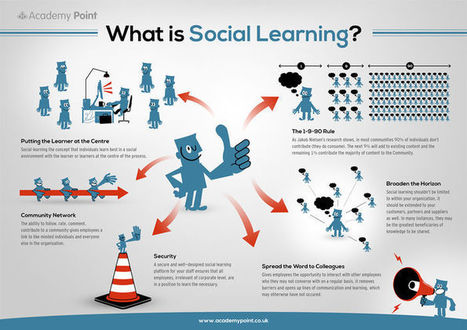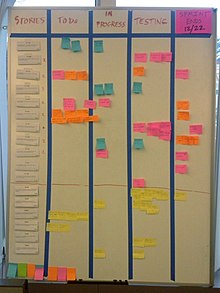El aprendizaje no tiene que ser una experiencia "solitaria".
El psicólogo ruso Lev Vygotsky sugirió que el conocimiento se construye a través de nuestras interacciones con los demás.
Los MOOC (Massive Open Online Learning) aprovechan nuestras necesidades sociales inherentes reuniendo a las personas para que aprendan el mismo material en un grupo virtual. Los estudiantes pueden expresar lo que están sintiendo y experimentando con los demás en un espacio compartido, haciendo que el viaje de aprendizaje sea más agradable y menos desalentador.
A medida que las personas ganen confianza, a menudo disfrutarán de una competencia amistosa con sus compañeros aprendices para forzarse a sí mismos a competir en ejercicios y tareas. El reconocimiento es parte de nuestra necesidad de desarrollar la autoestima, y algunos cursos incorporan la gamificación para recompensar los logros de los estudiantes y la ayuda comunitaria.
Conozca más / En savoir plus / Mehr erfahren:
https://www.scoop.it/t/21st-century-learning-and-teaching/?tag=Social+Learning
Via Gust MEES, María Dolores Díaz Noguera



 Your new post is loading...
Your new post is loading...










![Social media for teachers [Infographic] | Help and Support everybody around the world | Scoop.it](https://img.scoop.it/8bn7TFef-UB428kxYiTitTl72eJkfbmt4t8yenImKBVvK0kTmF0xjctABnaLJIm9)







Russian psychologist Lev Vygotsky suggested that knowledge is constructed through our interactions with others.
MOOCs (Massive Open Online Learning) leverage our inherent social needs by bringing people together to learn the same material in a virtual group. Students can express what they're feeling and experiencing with others in a shared space, making the learning journey more enjoyable and less daunting.
As people gain confidence, they often enjoy friendly competition with fellow learners to push themselves to compete exercises and assignments. Recognition is part of our need for building self-esteem—and some courses have gamification built in to reward student accomplishments and community helpfulness.
Learn more / En savoir plus / Mehr erfahren:
https://www.scoop.it/t/21st-century-learning-and-teaching/?tag=Social+Learning
This is an interesting intro to social constructionism as it applies to eLearning. I hope the MOOCs do what they suggest and are not just an attempt to throw jargon out there.